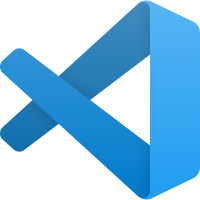Sojourn
Narrative Puzzle
Quickview

Made with Unreal Engine 4
Role
Lead Programmer
Languages Implemented

UE4 Blueprints
Tools Used

Unreal Engine 4

VS Code
Development Time
Fall 2017 - Spring 2018
Sojourn is a 3D narrative puzzle game where the player manipulates paintings to traverse victorian rooms and corridors, recovering their memories along the way. The player can travel in and out of paintings, shuffle the paintings around, and discover a number of interactables within, which affect obstacles in both other paintings and in the outside world.
The player experiences the the narrative as an elderly character, reliving the moments of their life through the paintings. Their most important memories are scattered through their childhood home, waiting to be found.
Sojourn was created and developed throught the entirety of my Senior year at Champlain College. During the previous summer, the rising Senior class divided ourselves into approximately twenty-five teams. Over the following twenty-five weeks, Sojourn was put together in a fast-paced trial by fire.
The game was the expansion of a simple idea our Lead Designer had - what if there was more to a portal system than just using it to travel? And so we developed upon the idea of being inside a painting, where you could influence the other paintings around you and the outside world as well.
In Sojourn, the player finds themselves dropped into a room, left with nothing but a single painting on the wall. They quickly find out that they can jump into the painting and manuever to the painting connected to it, escaping the room they're confined in.
As they continue on, the player is led down through a series of tutorial puzzles, where they are introduced to the main mechanics of the game. During this time, they also begin to unravel the various story threads that are littered within the paintings, until they find themselves in the Great Hall (the background picture on the site!). From there, they have two spokes that they can explore, each of which has new mechanics and unique theming. At the end of each are two halves of a giant painting that - once collected - allow them to travel to the second floor of the Great Hall.
The second floor introduces another two spokes, where the player is again made acquainted with new mechanics, unique spoke theming, and tasked with retrieving two more halves of a larger painting, allowing them to reach the balcony of the Great Hall.
In the game's finale, the players are lead through the final spoke that brings their journey to an end, wrapping up the various stories, combining together all of the mechanics they've been taught up until that point, and leaving a bittersweet taste in the player's mouth as the narrator comes to the end of their tale.
Sojourn was initially developed with a small team of four for the first half of its development, before growing into a team of eight for the latter half. The game is built within Unreal Engine 4, using primarily the UE4 blueprint system.
My job was the creation of all of core systems, including the UI, level streaming, multi-character controllers - which encompassed the player both in and out of painting, the paintings' network, saving and loading, and interactivity between objects.
I also managed the internal directories of the project, maintaining the organization and stability of files for ease of access. Additionally, each member of the team was required to carefully log their hours, commit their changes to the repository, and complete weekly documentation, which included a Technical Risk Assessment as my primary responsibility.
Sojourn was developed over a strict 25-week Agile development cycle, where each week was marked as a sprint. The first few weeks were a point of rapid prototyping, where we made three initial game prototypes, one of which would go on to be Sojourn. During this time, I worked with the designers and artists on my team to allow for quick and easy level creation, as well as art implementation.
After the conclusion of the fall semester, approximately half of the Senior teams were selected to proceed with their projects, which included Tierceron, our team. Through the subsequent two weeks, we onboarded another four members to our team, bringing Tierceron from our initial four members to eight.
The last four months of development involved a wide variety of changes, including a change in art direction from medieval to victorian, scrapping almost 80% of the initial levels in favor of a new, more fluid exploration sequence, as well as a significant number of background functionalities to accomodate all of the changes being made.
Download Sojourn